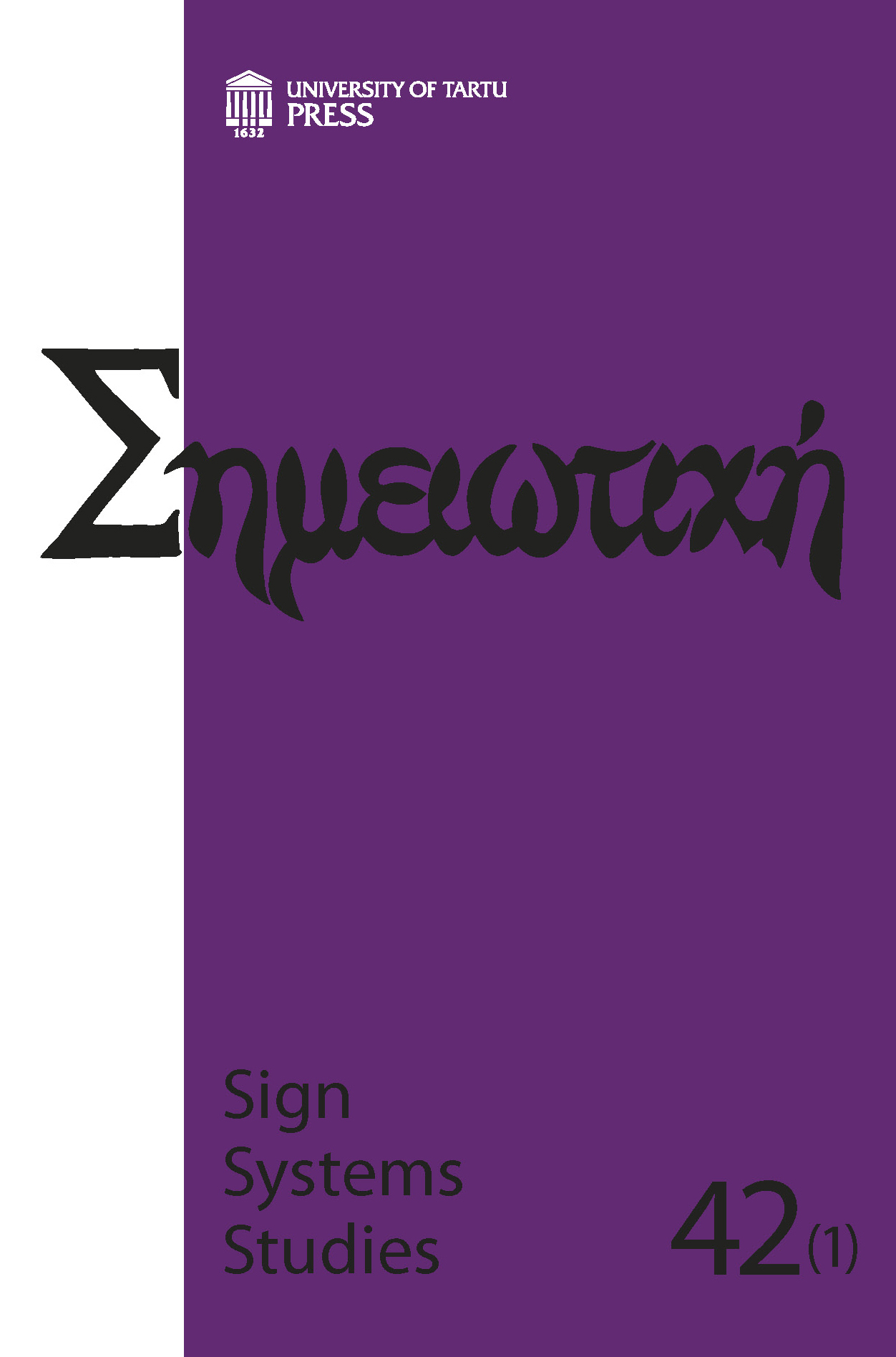Schemata as the primary modelling system of culture: Prospects for the study of nonverbal communication
DOI:
https://doi.org/10.12697/SSS.2014.42.1.02Keywords:
schemata, modelling system, communication, art, play, emotionAbstract
The art historian Ernst Gombrich asserted that both artists and viewers are constrained by specific cultural mental sets within which they operate: he used “schemata” to refer to both actual sketches and our mental sets. In mapping the mechanism of culture, Juri Lotman situated both language and the “schematized image” at the centre of semiospheres: they function to introduce unity and eliminate contradictions. Schemata have obviously served as both the cause and the result of human knowledge, some loosely constructed yet highly condensed forms of art in different domains. Theorizing at a time of a hypertrophy of scientific and linguistic models, Lotman and Gombrich appear to have converged on theorizing our means of connecting people across cultures. They each put forward their own perspectives concerning the interplay between culture, art and pictorial representation. This paper serves to: (1) examine how Lotman and Gombrich interpreted Jakobson’s scheme of communication; (2) reveal the paradox of schemata and nonverbal communication latent in their writings; (3) soften the paradox by drawing on Lotman’s conceptulization of play as an emotional structure. It is argued that the kind of emotive potential defined from the perspective of beholders or addressees is crucial to our survival in the global village.Downloads
Download data is not yet available.
Downloads
Published
2014-05-26
How to Cite
Chien, J.-P. (2014). Schemata as the primary modelling system of culture: Prospects for the study of nonverbal communication. Sign Systems Studies, 42(1), 31–41. https://doi.org/10.12697/SSS.2014.42.1.02
Issue
Section
Articles


